(Ethiopia-Afar Geoscientific Lithospheric Experiment

Material from our funded NSF proposal,
US-EAGLE (Ethiopia-Afar Geoscientific Lithospheric Experiment):
Modification of lithospheric structure during continental break-up
--------------------------------------------------------------------------------
5. Scientific Plan and Objectives
We aim to define the anatomy of a rift immediately prior to break-up and so determine the relative importance of faulting and dynamic processes in the localization of strain and magmatism to a narrow zone at break-up. Our objective can only be achieved via a combination of experiments and careful integration with geologic, potential field, geochemical and petrologic data that will also be gathered and analyzed as part of this project. When viewed as a combined project, our study consists of a group of complementary and integrated seismic experiments (Figure 8, Figure 9, Figure 10), corresponding geochemical and petrologic studies, and an analysis of potential field and remote sensing data. The seismic effort consists of: 1) a 400-km wide-angle reflection/refraction profile along the axis of the rift as it extends from central Ethiopia into Afar (NSF project); 2) a series of fan profiles in the region to provide 3-D coverage (NSF project); 3) a wide-angle reflection/refraction experiment to provide a detailed crustal and upper-mantle velocity model along a 400 km transect across the northern Ethiopian rift (funded UK project); and 4) a network of broadband (BB) and short period (SP) instruments to reveal 3-D variations in crust and mantle structure via tomographic and anisotropic analysis of the teleseismic, regional and local earthquake waveforms (funded US and UK projects).
The specific questions to be addressed are:
1. What is crustal structure associated with individual magmatic rift segments? That is, what volume of magmatic material has been added to the crust across the rift? How is crustal structure modified by faulting and magmatic processes? Are there pre-rift variations in crustal composition and/or lithospheric properties across the continental rift (e.g. Figure 2C) that influence the location of the magmatic segments and border faults?
We will produce a detailed crust and upper-mantle velocity model of a narrow transitional rift segment where strain is localized in a ‘magmatic segment’. We will compare variations in crustal velocity structure and reflectivity across and along (NSF project) the length of the rift with existing information on Precambrian basement terranes to assess the role of basement in the location and termination of faults and magmatic segments. Reflectivity and velocity information will be used to determine whether significant underplating takes place during the syn-rift stage; interpretations will be tested with new and existing gravity data. We anticipate that our 3D fan profiles (NSF project) will locate magma chambers in the crust, if any, from wide-angle reflections or attenuation patterns, thereby resolving the controversy of the depth of formation of the peralkaline rhyolites (pantellerites) that are so characteristic of the Ethiopian Rift (Chernet & Hart, 1999; Trua et al., 1999; Ayalew, 2000). If bright-spot reflections are observed we will use the AVO methodology of Makovsky & Klemperer (1999) to estimate fluid compositions and percentages. We hope to distinguish between the model in which the magmatic centers are separated only superficially, by fault systems controlled by changing stress systems (here, the Wonji Fault Zone of Boccaletti et al., 1999) and a model in which the magmatic centers are controlled by the pattern of asthenospheric upwellings (cf. Phipps-Morgan and Chen, 1993).
2. Does the spatial distribution of Quaternary magmatism correlate with the distribution of long-term and present-day strain?
We will determine co-seismic, as well as long-term, strain from local seismicity, fault kinematics, subsidence analyses, and seismic estimates of total crustal thinning across the profile compared with the geodetic strain as measured by Bilham et al. (1999). Variations in seismogenic layer thickness will be compared with the distribution of strain within the rift, and the estimates of lithospheric rheology from models of gravity data. We can then test our interpretations with models of gravity/topography data and basin stratigraphy (e.g. Kusznir et al. 1987) and evaluate the role of border faults during rift evolution. Field mapping along the magmatic segment by Ebinger, Furman and students will allow us to quantify extension by diking for comparison with dike models. Detailed chronostratigraphic work by these investigators will help determine the temporal association of faulting and volcanism.
3. Is there asthenospheric upwelling beneath the Quaternary magmatic segments? That is, can we determine whether the pattern of mantle flow is related to lateral movement of plume material from a plume stem (e.g. Ebinger & Sleep 1998), or discrete mantle upwellings, as along mid-ocean ridges (Blackman & Kendall 1997)?
We will image variations in lithospheric structure in 3-D, in particular the crust-mantle boundary and the distribution of low velocity zones in the uppermost mantle, and compare them with the patterns of magmatic segments and border faults. The direction and magnitude of seismic anisotropy will be determined from the broadband network, as well as data from US (Nyblade) and French (Cara) regional networks. Potentially these data will allow us to resolve not only 2D but also 3D variations in rift structure and extension directions at different levels in the crust/mantle (cf. Simpson, 2000). We will compare results with stress orientations, basement fabrics and predictions of mantle flow models. Incorporation of data from this passive experiment with data from our collaborators’ regional stations will provide the perspective to distinguish between oceanic segmentation and regional plume flow models. Our active source studies and the recordings from this experiment on the broadband and short period networks may also reveal reflections from the magma chambers, providing information on the lateral continuity of the magmatic segments and their along-strike variability.
Insights from mafic lava geochemistry (NSF project) are a critical supplement to our seismic data to address these questions. Basalt geochemistry can indicate the relative contributions of melts and fluids derived from the asthenosphere, lithosphere and crust, as well as the intensive parameters associated with the melting process. The study area differs from most portions of the EARS in that it is highly extended and appears to overlie regions of anomalously thin crust. In other areas of the Kenya and Ethiopian rifts, mafic magmas appear to have been generated within, or equilibrated with, the underlying lithospheric mantle by small (<3%) but variable degrees of partial melting (Macdonald 1994; Rogers et al. 2000; Macdonald et al. 2001). Changes in basalt geochemistry are closely linked to the topography of the lithosphere-asthenosphere boundary, which shallows – perhaps abruptly – during progressive rifting. This relationship has been demonstrated in both the western Rift (Furman and Graham 1999) and the Quaternary portion of the Turkana rift (Furman et al. 2001). In both cases, lavas derived subsequent to significant lithospheric erosion are characterized by high Ce/Yb values, low 87Sr/86Sr (~.7030) and high 206Pb/204Pb (>19.2). These geochemical characteristics are interpreted as evidence for a deep (sub-lithospheric) mantle source region such as an upwelling plume. Published data from the study area are limited, but suggest the involvement of both lithospheric and sub-lithospheric source regions (Fig. 11). We will explore in detail variations in source composition both within and between magmatic segments, and will compare the central rift to exposures along the flanks and rift wall. This investigation will enable us to document both spatial and temporal factors in magmatic rift evolution.
Answers to Questions 1-3 will allow us to distinguish between models of continental break-up, resolving, at least for the Main Ethiopian Rift, the controversy: Do border faults serve as incipient lithospheric-scale detachments (e.g. Driscoll & Karner 1998), or do asthenospheric upwellings supply magma to crustal reservoirs, enabling strain accommodation by diking similar to oceanic rifts (e.g. Rubin 1992; Poliakov & Buck 1998)?
6. Methodology
6.1 Seismic overview
The active and passive seismic experiments (Figure 8, Figure 9) are planned to meet specific objectives as follows.
I Two 400 km-long refraction/wide angle reflection seismic profiles to determine detailed P- and S-wave velocities. The cross-profile (UK funding) (Figure 8), centered on the Nazret neovolcanic zone, is long enough to image the breadth of the rift zone into the upper mantle, and near-parallels a major road providing good access. The profile along the rift axis (NSF project) (Figure 9) will extend far enough north into the Afar to investigate the transition from a fundamentally continental domain to an oceanic one. It also follows a good road and has good access. In the case of the KRISP experiments, the biggest surprises came from the axial profiles (Mechie et al., 1994; Keller et al., 1994b) that showed large, unexpected variations in crustal thickness and velocity structure.
II 3D fan profiling (NSF project) of the area where the two refraction/wide angle reflection profiles intersect (Figure 9, Figure 10). The cross-rift and axial profiles are ultimately limited by being two-dimensional profiles across a 3D structure; and interpretation of such profiles invariably assumes 2D structure. Additional fan-shots into already-deployed arrays are a relatively cheap way of extending the 2D profiles into 3D, and ascertaining how variable the rift is not only along the axis, but also out to and across the rift margin. Additionally this area is interesting because it is close to the offset between two separate magmatic segments (Figure 4, Figure 5), so providing the chance to understand whether this segmentation is purely a crustal, or also a mantle, phenomenon (see below, “Basalt Geochemistry”). Some authors have mapped a cross-rift “Wonji Fault System” separating the Nazret and Koka segments, though whether this is a shallow, or a through-crustal fault system remains uncertain (Boccaletti et al., 1999). The region of 3D coverage will cover the Koka and much of the Nazret magmatic segment, and will detect crustal magma chambers, if any (cf. bright-spot reflections recorded over magma chambers in Neogene rifts of southern Tibet, [Makovsky and Klemperer, 1999]), thereby potentially constraining models of magmagenesis beneath the active calderas in the rift.
III 3-month deployment of 50 x 3-component broadband seismic recorders in a 100x100 km2 area centered on the Nazret neovolcanic zone (UK funding) (Figure 8). Observations from local seismicity and teleseismic earthquakes will be integrated into a tomographic model and analyzed for crustal anisotropy. This network will be used to locate local earthquakes and analyze fault plane solutions. Additionally, this network will record the in-line and fan shots (above) thereby improving the resolution of the 3D controlled-source tomographic model (NSF project).
IV 1-year deployment (synchronous with I, II and III) of 25 broadband seismic recorders over a 250x250 km2 region to define the shape of the crust-mantle boundary along and across the rift segments, and to improve images of the uppermost mantle across the underlying mantle plume (UK funding) (Figure 8). Receiver functions and body- / surface-wave tomography will be used to image earth structure. S-wave polarization analyses will assess the nature of seismic anisotropy and its interpretation in terms of mantle dynamics, tectonic fabric and stress regime. Nyblade’s broadband recording (existing US funding) will partially overlap in time; and several UK instruments will re-occupy Nyblade’s sites after the US instruments are pulled out.
V We are not proposing a CMP seismic reflection profile. When we first conceived the EAGLE project, we planned to acquire a crustal-penetrating, CMP-reflection profile across the Ethiopian Rift. An important outcome of our scouting trip in Ethiopia in May 2001 was our regretful conclusion that no useful continuous reflection profile could be accomplished with a reasonable certainty of success within a realistic budget. Although parts of the profile could easily be accomplished across flat, fertile farmland, because we wish to image the magmatic centers and not merely profile along possible strike-slip offsets between them, key portions of the profile would include steep young volcanic constructs, or rugged basalt fields crossed only by camel tracks. Shooting short disconnected portions of reflection profile would risk missing significant rift-faults. In this environment, our proposed long-offset under-shooting with refraction shots, coupled with 3D fan imaging, seems to us a far more reliable and cost-effective way to advance our knowledge.
6.2 Active Source Seismic Experiments
The objective of the wide-angle survey, to be undertaken in early 2003, is to provide the definitive, cross-rift P- and S-wave velocity model of the crust and upper mantle in the vicinity of the Nazret magmatic segment of the rift and for an axial profile that extends into Afar. The only existing wide-angle profiles (Berckhemer et al. 1975) were undertaken at too sparse a station spacing (5 km) and shot interval (~150 km) to show any more than a first order variation in crustal layer thickness and velocity variations beneath the six profiles (Fig. 6). None of these earlier profiles crossed the neovolcanic zones (Figure 4) in the northern Ethiopian rift (Berckhemer et al. 1975). Our experience in the Kenya rift (e.g., Keller et al., 1994a; Maguire et al. 1998; Birt et al. 1997) has shown that detailed crustal P- and S-wave velocity models can be derived via 2-D profiling, provided the shot and station spacing is tuned to the dimensions of the structures to be imaged (Figure 2C).
Our experience in the Kenya rift (Keller et al., 1994a; Simiyu and Keller, 1997; Maguire et al., 1998), and ray tracing through typical models suggests that a crustal thickness of ~40 km beneath the rift flanks necessitates a line length of >350 km to acquire adequate ray coverage at lower-crustal and upper-mantle levels to meet our objectives. In the proposed experiment (Figure 9, Figure 10), 440 TEXAN recorders from the PASSCAL/UTEP pool, 150 TEXAN recorders from the University of Copenhagen, and 100 new 3-component recorders from the British instrument pool will be deployed for the active source experiments. The two deployments (Figure 10) are largely symmetrical, but some differences exist in order to make the shooting as efficient as possible and enhance the 3-D coverage. During deployment 1 (Figure 10a), 390 TEXAN recorders and the 100, 3-component recorders will be deployed along the profile crossing the rift. These instruments will be interleaved so that every fourth station is a 3-component recorder. This approach will insure that S-waves can be positively identified. The nominal station spacing will be ~1km out side the rift valley and ~700m inside it. In addition, 200 TEXAN instruments will be deployed in an array (100 linear and 100 distributed in a 2D areal array) for offline recording. The linear array will be deployed along the axial profile at ~1km intervals and these stations will be recording locations will be reoccupied during the second deployment. During deployment 2 (Figure 10b), 440 TEXAN instruments and 50, 3-component recorders will be deployed along the rift. The nominal station spacing will be ~1km. In the vicinity of the rift valley, 50 of the 3-component recorders and 50 of the TEXAN recorders will stay in their locations from deployment 2. In addition, all recorders of the passive experiment (50 3-component BB local array, 25 BB teleseismic array) will be deployed for these shots. This geometry and dense recording array will provide substantial control on velocity structure for the analysis and 3-D interpretation of the natural-source data and many opportunities for innovative integration of the active and passive source data.
The profiles have been scouted and will be sub-parallel to the major road across the rift to the southeast of Addis Ababa and the major road in the rift valley extending up to Afar. Reconnaissance in April/May 2001 identified the condition of tracks away from these roads, finding them suitable for the deployment of recorders and ensuring minimum cultural noise. A total of 16 shots will be fired in nominal 50m holes along the profiles (up to 2 tons at profile ends) (Figure 9, Figure 10). Two further broadside (fan) shots will be fired into each of deployments 1 and 2 (Figure 10). This fan component is the key to extrapolating the 2D axial and cross-rift profiles into the third dimension (cf. Fig. 12). The refraction and wide-angle reflection data will be interpreted using a variety of modern tomographic and ray-tracing inverse and forward modeling techniques. Both indirect and direct model assessment will be employed (Zelt 1999). We plan to use at least one lake shot, for one of the fan shots in Lake Bishoftu. Although lake shots are only slightly cheaper than drilled shots, because of the cost of renting and trucking zodiacs to each lake, and the extra personnel required because of the impossibility of a single crew shooting multiple lake shots on the same night, they produce far higher signal-to-noise ratios than equivalent weights of dynamite in shot-holes (Burkhardt and Vees, 1975b, Jacob et al., 1994). Unfortunately, four of the five great lakes in the rift are very shallow (mean depth < 10 m) (Ayenew, 1998), and the other, Lake Shala, is a national park, precluding its use. In contrast, Lake Bishoftu, off the rift axis at Debre Zeit (Figure 5) reaches 87 m depth (Kebede et al., 2001), and was successfully used for a lake shot in the 1972 Afar experiment (Burkhardt and Vees, 1975a).
The active-source effort will require 10 recording teams and 4 shooting teams for 26 days. Additionally there will be an executive, a data, and an explosives manager. The main recording party will have 4 days in Addis Ababa for orientation and training prior to the 4 days allocated for deployment of the recorders. The shots for the first deployment will be fired over a 3 night period, and the instruments picked up the following day. There will be 3 days at the base for downloading data and re-programming instruments prior to a similar 4 day deployment/ 3 nights of shooting cycle. At the end of the experiment, 4 days are scheduled in Addis Ababa in order to insure that all data are downloaded and processed and that all paperwork is correct. In each deployment the instruments will be actually in the field for 5-6 days at a maximum insuring that battery life will be sufficient. This plan includes periods of rest for the deployers, shooting teams, and technical support staff because these groups are busy at different times. This approach is similar to what we have done in Kenya during the KRISP project and worked well (Prodehl et al., 1994b).
6.3 Passive Seismic Experiments
A local seismic array provides an additional approach to the project objective of mapping the 3D morphology of the link between the Nazret and Koko magmatic segments (Figs. 4, 5). Estimates of the depth to the brittle-ductile transition, co-seismic deformation and their variation from border fault into magma emplacement controlled extension are also required to understand how the transition between these two processes takes place. To achieve these objectives, 50 x 3-component recorders will be distributed over a nominal 100x100km2 region centered on the Nazret segment for a period of 3 months (Figure 8). On average, 5 local earthquakes are recorded daily at the permanent Addis Ababa broadband station, the bulk of these occurring within the Ethiopian rift (A. Ayele, pers. comm. 1999), and 10-12/day are currnetly being recorded on the UK-EAGLE broadband array installed this fall (G. Stuart, pers. comm., 2001). Over 3 months these data, together with teleseisms, will provide sufficient regional phases (P, S, Pg, Lg, Pn, Pnl, Sn) to produce a 3D tomographic model of crustal and upper-mantle variations between the two magmatic segments straddled by the network using codes developed from the Thurber (1983) approach for simultaneous inversion for source location and 3-D velocity; cf. a sophisticated example requiring almost no a priori knowledge of the velocity model by Asad et al. (1999). The integration of information from near-vertical teleseismic raypaths with the sub-horizontal phases from local sources and particularly from the controlled sources (fan profiling, above) will enable us to resolve deeper Earth structure. The seismicity distribution, determined with Ethiopian colleagues, will define the active faults and the depth to the brittle-ductile transition; focal mechanisms will define the stress distribution associated with the extension in this complex zone. The deployment of the SP array will take ~1 month and will be completed at least 1 month before the start of the controlled-source program. The 50 SP instruments will be deployed for a total of 4 months. The UK team will visit each site every 4 weeks to download data, and to check on data quality, site condition and security.
A network of 3-component BB sensors will be deployed for a year throughout a 250km x 250km region centered on the refraction profiles (Figure 8). Andy Nyblade (Penn State University) has deployed 30 BB stations in Ethiopia (with funding from NSF-EAR-Geophysics) that will record local and teleseismic earthquakes until March of 2002. The majority of this equipment was deployed in March 2001. Deployment of the British BB array began in October, 2001 and will be deployed for 1 year, ensuring overlap by about 6 months with Nyblade’s array. The SP array will be deployed for the last 3 months of the BB deployment and the wide-angle project will take place at the end of this 3 months, all arrays recording the controlled source shots.
This CD proposal request no funds for the passive-seismology component of the EAGLE, but will benefit from it by using the recordings on these arrays of our dynamite sources; and of course by the integration into our final syntheses of the results from the passive seismology, particularly through the participation of Andy Nyblade (Penn State) in EAGLE meetings.
6.4 Seismic Logistics and Local Arrangements
Logistics are relatively straightforward in Ethiopia in our region close to the capital, Addis Ababa, inside the region in which US investigators (Andy Nyblade) have already established a seismic network, in regions where field geologists (Cindy Ebinger) routinely travel on their own, and where an international collaboration is already underway that provides us with a unique opportunity to partner with an established (and funded) interdisciplinary team.
In the spring of 2001, we (Klemperer, Harder, and Tefera Eshete [an Ethiopian graduate student at UTEP]) accompanied our British colleagues on a scouting trip during which the recording profiles were scouted. This visit also allowed us to liaise with Ethiopian government agencies, university, customs, drilling companies, accommodation, vehicle hire, etc. The Commissioner of Science and Technology (equivalent to the Director of NSF in the US), has offered all possible help to US-EAGLE, as has Dr Laike Asfaw, Director of the Geophysical Observatory of Addis Ababa University, who is head of the local organizing committee for the EAGLE program. Personal assurances of support have also been received from the Director of the Geological Survey of Ethiopia and from the Head of the Petroleum Operations Department. The British group already has the permits arranged for the import of explosives, and for drilling and shooting; and – to our great cost-savings – has secured permission for duty-free import of equipment and explosives. They are already on the ground in the Ethiopia, and will have a continual presence until after the active source work is completed. Thus, smooth logistical arrangements seem assured.
6.5 Gravity
The existing, nonproprietary Bouguer gravity anomaly data, obtained from the National Imaging and Mapping Agency (NIMA), consist of 3467 points for Ethiopia. The present open-file dataset is concentrated along main roads with essentially no data between them. Additional data are shown by Mahatsente et al. (1999, 2000) who combined data obtained from Cindy Ebinger with the NIMA dataset. Our collaborator Berhanu Bekele and his colleagues at GSE have now acquired data along most motorable roads in the country, and data within the EAGLE study window has been released to EAGLE (UK). The data need additional calibration to compensate the now-known base-station height errors. To complement the existing gravity data, Mickus will collect new gravity data at 0.5 km intervals (c. 800 points) along the axial seismic profile using the UTEP Lacoste-Romberg gravity meter with the elevation, latitude, and longitude determined by differential GPS methods. [Note that a UK student will collect equivalent data along the cross-rift profile.] Near station terrain corrections will be determined in the field by Hammer (1939) charts and regional terrain corrections determined by digital terrain data (available from NIMA) and the technique of Cogbill (1990). Additional gravity data using the same collection techniques will be collected at the 3D seismic wide-angle survey receivers and if time permits in regions where large data gaps exist. The detailed data along the axial profile will be used to construct a crustal-scale model (2D) constrained by the seismic refraction data/model and geological data (e.g., surface maps, drill holes). The gravity model/data will be used to constrain any ambiguities in the seismic models. The gravity data collected within the 3D wide-angle seismic survey will be used for the same purpose, constraining the seismic models, however a 3D forward model will be constructed. The gravity data collected within large existing data gaps will be used to construct residual (isostatic and wavelength filtered) and edge enhancement (enhanced horizontal derivatives [Fedi & Florio, 2001]) gravity anomaly maps. These maps will be used to locate regional trends in the gravity field and be interpreted in context with known geologic features and the newly obtained seismic data.
Mickus will carry out the interpretation effort in close conjunction with UTEP and Stanford’s development of the seismic models; but also working with Ebinger (RHUL, London) who has been working with gravity data over the rift for regional analyses of along-axis segmentation and effective elastic thickness, etc. (e.g. Hayward & Ebinger 1996; Petit & Ebinger, 2000)
6.6 Basalt Geochemistry
Lavas from the northern Main Ethiopian rift will be collected during the field program with colleagues from the University of Addis Ababa. We will focus on magnesian basalts as these lavas preserve the most reliable record of their source regions. Collaborators Gezahegn Yirgu and Dereje Ayalew have sampled volcanic centers in the Nazret rift segment; these lavas have been analyzed for their major element compositions and are available for further analysis. We will complement the existing sample suite with additional basalts sampled across boundaries that separate the Koka-Nazret and Nazret-Sabure magmatic rift segments (Figure 4). Preliminary data suggest that the Koka-Nazret boundary displays major structural offset with little or no inferred change in source composition, while the Nazret-Sabure boundary is less well defined in structural terms but corresponds to a significant change in mantle source (Yergu, pers. commun. 2001). The sampling program will focus on evaluating these initial results, and on obtaining samples from along the rift axis in each segment.
Bulk rock analyses for major and trace elements will be carried out on 40 samples from the northern main Ethiopian Rift. Major and selected trace element analyses will be carried out using DCP at Duke University; a subset of samples will then be analyzed by ICP-MS in the same facility for additional trace elements, including the rare earth elements (REE). We will focus on key large ion lithophile (Rb, Ba), high field strength (Zr, Nb) and rare earth elements. These data are critical in determining the mineralogy and metasomatic history of the source region, as well as the conditions of mantle melting (e.g., Hart et al. 1989; Furman and Graham 1999; Pik et al. 1999). For example, incompatible trace element ratios such as Sr/Ce, P/Ce, Zr/Nb and Ba/La have characteristic values in the mantle lithosphere beneath both the Kenya and Ethiopia domes (Furman et al. 2001), and these values are distinct from those observed in lavas derived from asthenospheric sources. Similarly, values of Sc/Y and La/Ybn can indicate the presence or absence of garnet in the source region, thus constraining the depth of melting.
Thin sections will be made of individual samples to evaluate freshness as well as phenocryst modes and textures. Phase compositions will be determined by electron microprobe analysis at Penn State. These data provide indications of mineral-melt equilibrium that can be used to assess the depth of melting and the range of intensive parameters of the magma storage systems. In addition, the documentation of xenocrysts within individual lavas provides insight into the range of lithologies through which magma ascent occurred.
We will obtain Sr-Nd-Pb analyses of 25 primitive basalts in order to constrain variations in the source region geochemistry. Sample dissolutions, chemical separations and Sr-Nd-Pb isotope measurements of whole rock powders will be carried out in Dr. Mary Reid’s lab at University of California at Los Angeles. These data provide important constraints on the source regions to individual samples, thus providing insight into the nature and scale of source heterogeneity beneath magmatic segments. The isotopic and trace element data are most powerful when integrated for interpretation. Together they may be used to identify contributions from sources located within the asthenosphere and lithosphere (e.g., Barrat et al. 1990; Vidal et al. 1991; Chernet and Hart 1999), and determine the topography along the asthenosphere-lithosphere boundary (Furman and Graham 1999; Furman et al. 2001). In the context of the proposed research, these data are essential to determine the degree of asthenospheric involvement in continental break-up.
Our project focuses on basalt lavas as providing the best available insight into the mineralogy and evolution of the mantle source regions. To date, no mantle xenoliths have been discovered within this portion of the main Ethiopian Rift that would provide additional constraints on the source history. In contrast, mantle xenoliths have been sampled in several areas outside the main rift axis, and are currently being investigated by Ethiopian, French and Italian petrologists and geochemists (Morten et al., 1992; Conticelli et al., 1999; Roger et al., 1999). We will integrate their results with ours, but do not plan to duplicate their efforts.
6.7 Other methodologies: Structure and thermochronology; Geodesy; Magneto-tellurics
Ongoing geologic field studies in the Ethiopian and Afar rifts include 2 UK PhD theses (funded 3-year studentships 9/99-8/02), supervised by Cindy Ebinger and Martin Menzies (RHUL). These students are mapping “seaward-dipping reflector” analogs within the rift and making comparisons of along-axis segmentation evolution; estimating volumes of magmatic production over the last 18 Ma (the geochronology is a collaborative effort with Paul Renne (UC Berkeley); and studying petrological development of rift magmatism; all in collaboration with Drs. Gezahegn Yirgu, Bekele Abebe, and Dereje Ayalew of Addis Ababa University. The surface structural mapping and the seismic-velocity profiles present a useful synergy and will benefit from joint interpretation. Velocity models will indicate the depth to Precambrian basement within the rift, and should also allow distinction of Neogene young syn-rift strata from the Mesozoic pre-rift platform strata that crop out west and east of the rift and presumably sub-crop within the rift. Seismic constraints on the maximum syn-rift sediment thickness will allow our structural geologists to prepare more reliable balanced cross-sections. (Though the structural component of the project would clearly benefit even more from a CMP seismic reflection profile that could show buried normal faults, an important result of our scouting trip in May 2001 was our unanimous conclusion that local conditions preclude recording a useful profile across the rift with a realistic budget.) However, given the present lack of subsurface knowledge, our velocity models alone will provide important new constraints on the rift-basin architecture, and it is our potential ability to see the petroliferous Permian-Jurassic Ogaden – Abay River basin below the surface basalts that is at the heart of the Ethiopian Petroleum Operations Department interest in our work.
The RHUL project on thermochronology and mapping of the syn-rift volcanics will also provide volume estimates for these volcanics as the rift evolves, but these volumes become far more valuable when coupled with the estimates of magmatic underplating that we will derive from the seismic results, in conjunction with gravity analysis. Because there are no young marine sediments we currently lack elevation control on the rift during its development; and so we need independent estimates of the volume of underplating to understand the uplift of the plateau. By integrating the structural observations (fault and dike mapping) and the radiometric dating, we hope to recognize the degree to which the governing stress system has rotated with time, leading to development of younger oblique structures (Boccaletti et al., 1999). If this rotation is significant, there should be significant 3D elements to the rift structure (cf. Simpson et al., 2000), which we may hope to detect with our 3D fan profiling.
Although we are strong believers in the importance of utilizing all available methodologies to construct our model of the Ethiopian rift, we have requested no funding from NSF for the “obvious” techniques of GPS geodesy and magnetotellurics. The most recent GPS campaign was acquired in 1997 along a profile parallel to and within 20 km of our proposed cross-rift reflection profile (Bilham et al., 1999). This work builds on 20 years of strain measurements in this region of Ethiopia (Mohr, 1978), including installation of permanent GPS stations on either side of the rift that continuously telemetered data to the Addis Ababa observatory. This work has demonstrated that two-thirds of the plate separation rate (6 mm/yr, Figure 3) is accomplished in a 30-km-wide zone in the center of the rift (Figure 2B) in a region weak enough, due to the presence of the active magma chamber, that daily tidal variation can be repeatably measured. Because this major result was recently obtained, there is no significant advantage to re-measuring the existing GPS array, and we believe that it is not cost-effective to this CD project to install new stations.
We believe that a magnetotelluric study of the rift is vital to properly constrain the volume of partial melting in the crust and upper mantle, because of the great sensitivity of electromagnetic fields to magmas (cf. Chen et al., 1996). Also, because modern MT experiments record 5-component data, even a 2D profile can constrain 3D effects by detecting changing strike of conductive anomalies with depth, if such effects are present. Kathy Whaler (Edinburgh, UK) has received UK-NERC funding for magnetotelluric studies along our proposed reflection profile in order to provide additional constraints on the nature and distribution of crustal heterogeneity, and of course the location and total conductance of the magma chambers.



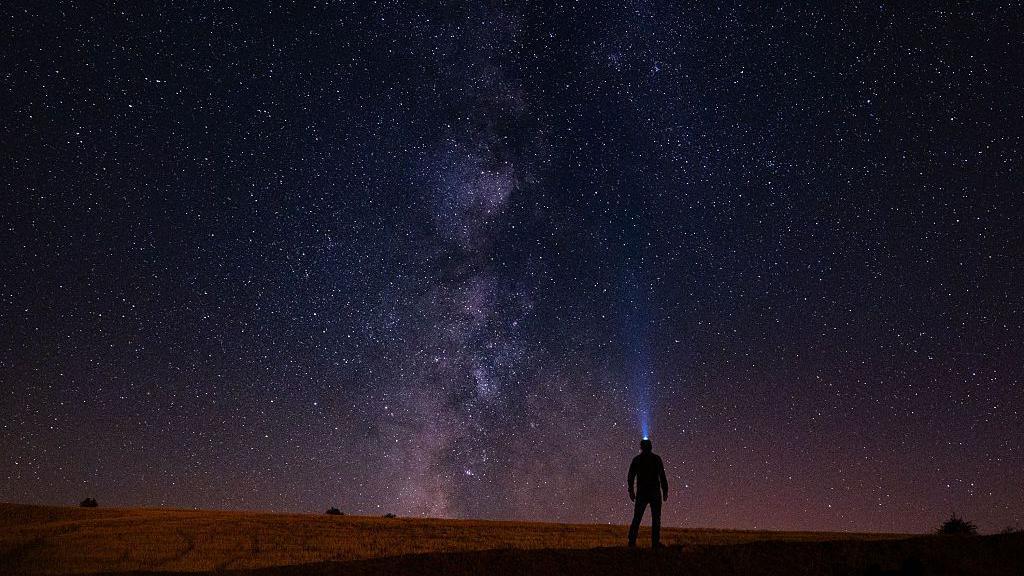
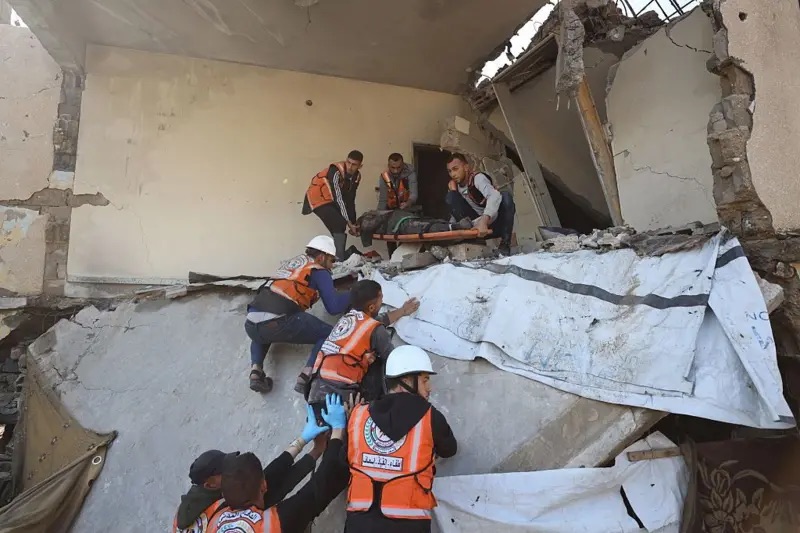

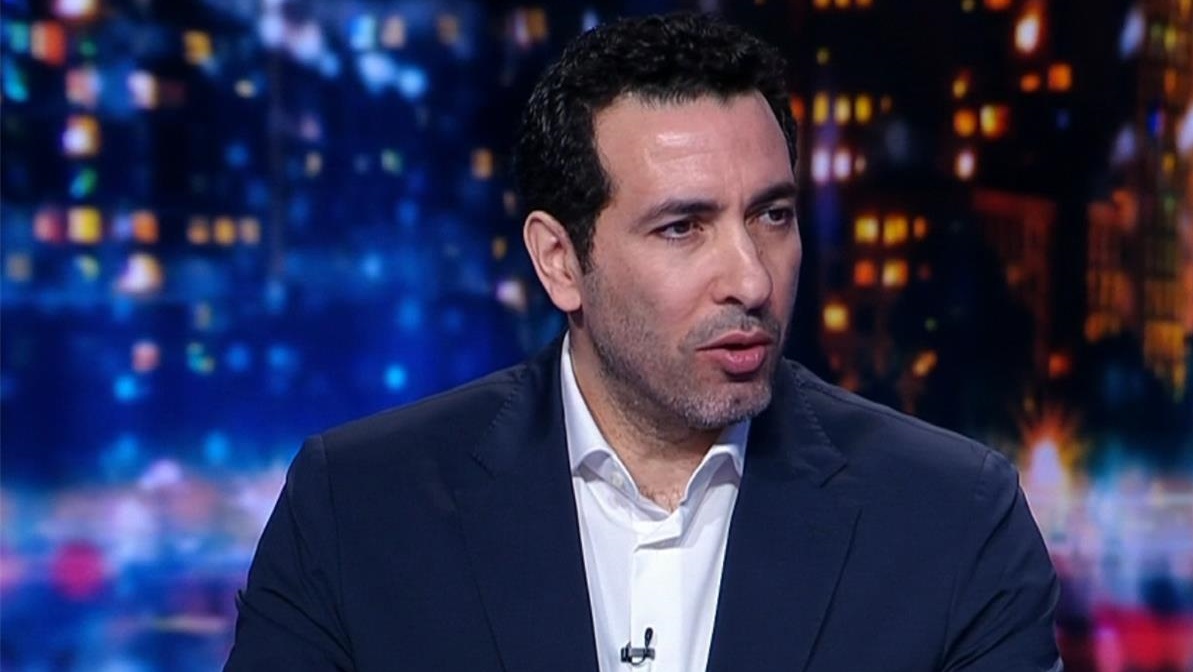




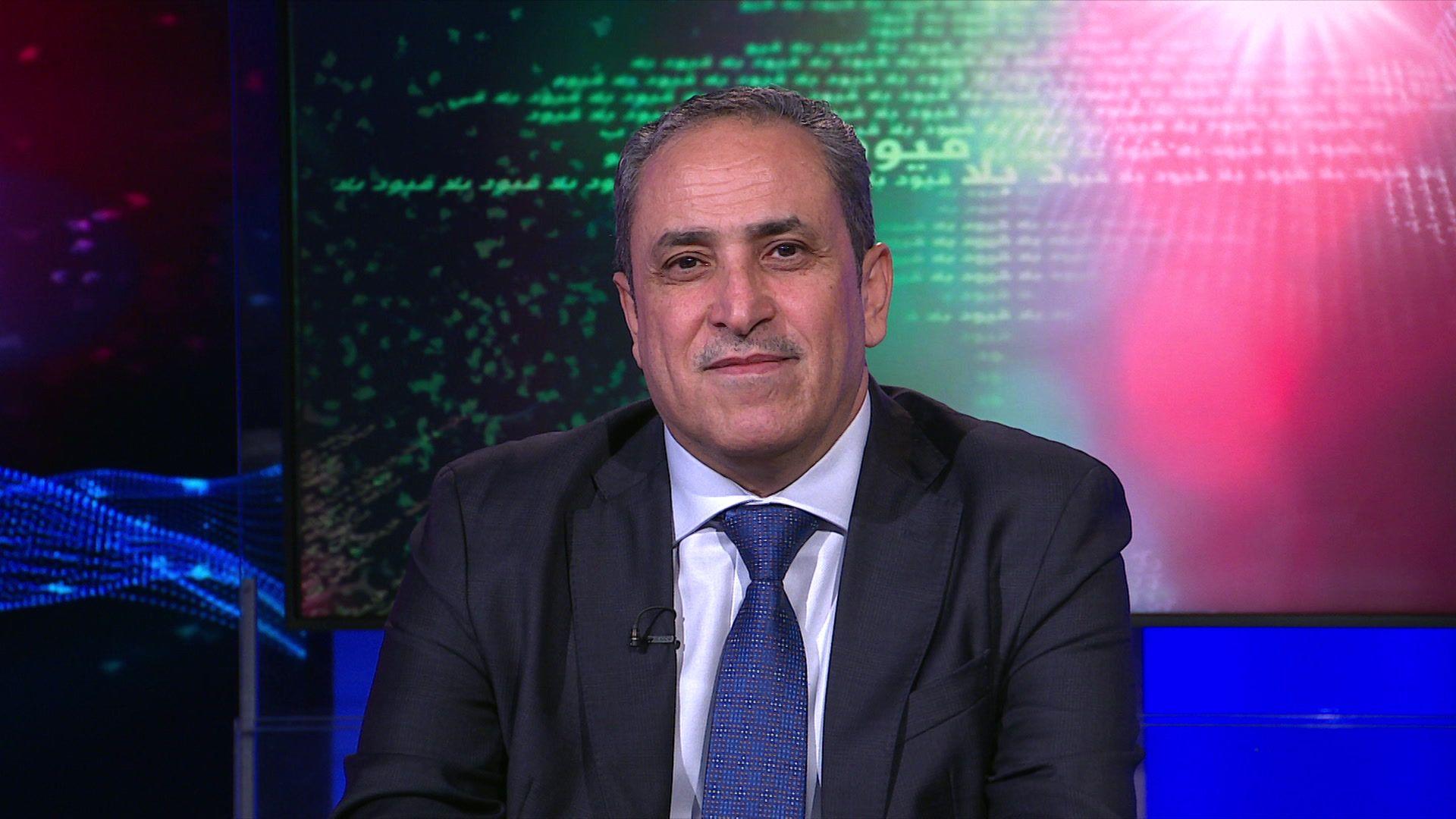
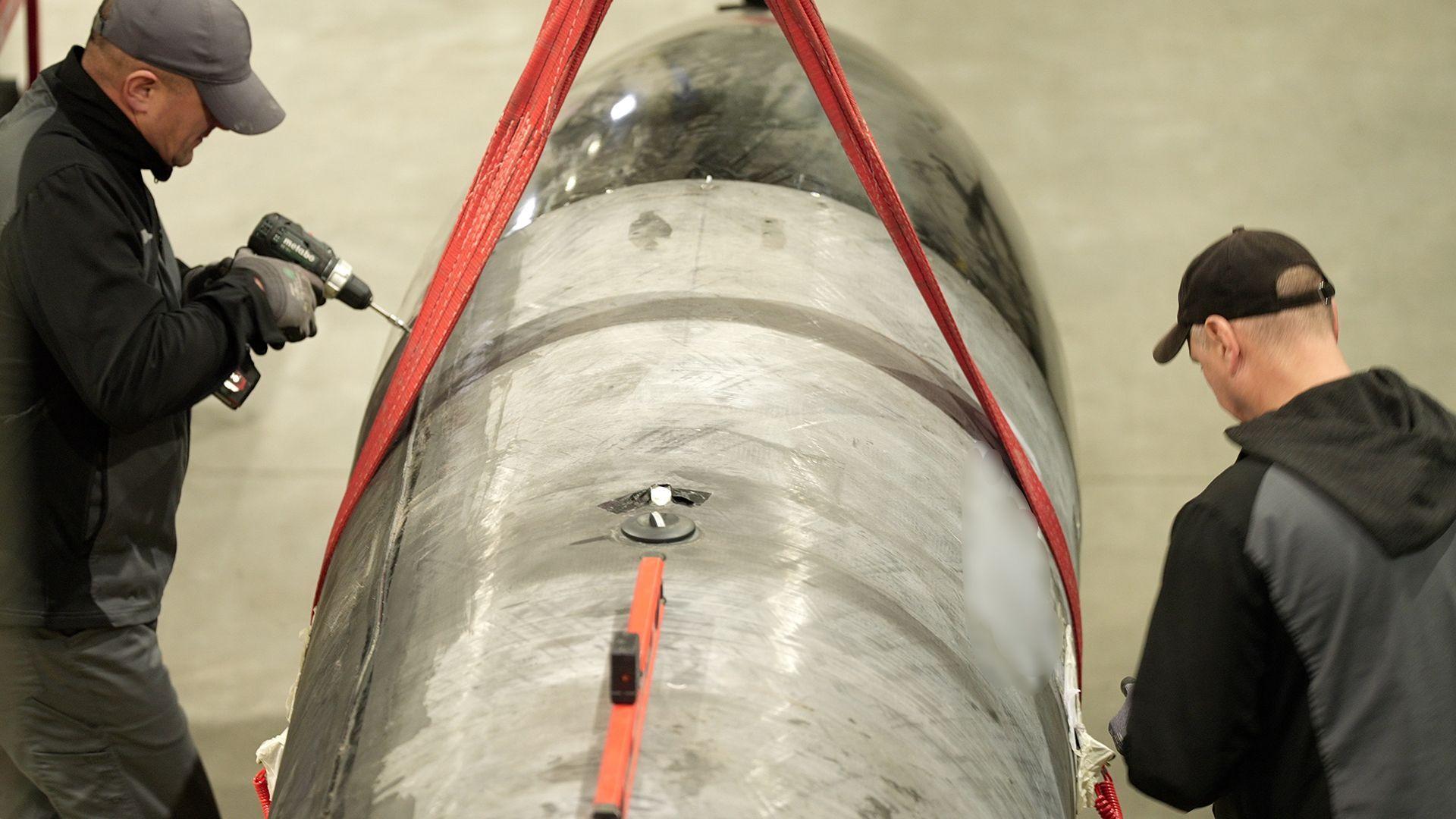






التعليقات (0)